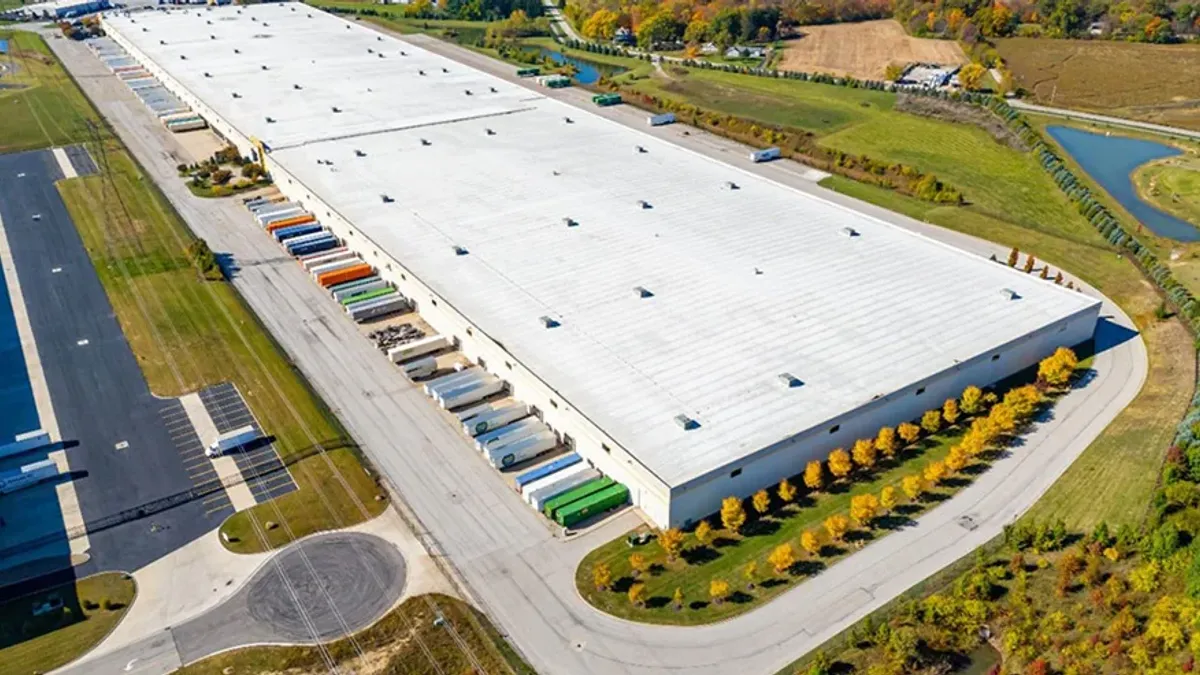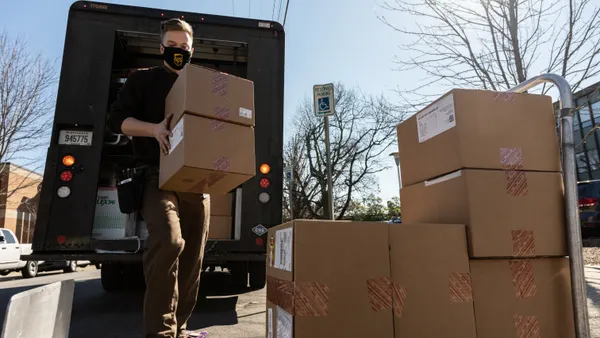Some supply chain advances are revolutionary — digitalization, the big data explosion, the Internet of Things (IoT) and blockchain, for example. But others are more evolutionary, emerging from need and organic business growth.
Many companies are finding that their third-party logistics provider (3PL) simply can’t keep a handle on everything happening in their ever-more-complex supply chains. Hence, the evolution of the 4PL.
"It's one-stop supply chain management," Jon Slangerup, Chairman and CEO of American Global Logistics, told Supply Chain Dive. "4PL is a fairly new term. It’s been kicking around [for a few years]." He added that about 70% of AGL’s new customers hire them as 4PLs.
3PL v. 4PL: What’s the difference?
"When we speak to clients about what exactly is the difference between a 3PL and a 4PL, there’s no textbook definition of the relationships," Josh Nelson, Associate Principal at The Hackett Group, told Supply Chain Dive. "A 4PL is an enhanced 3PL. A company will look at its supply chain and choose a 3PL for transportation, warehousing and distribution. These same partners are separated from each other. It’s a portfolio of relationships— a 3PL."
A 4PL, however, manages all of those supply chain operations, including carriers, warehouses, reverse logistics and more, breaking down silos and providing end-to-end visibility and transparency. Quite often, Nelson added, 3PLs will acquire other 3PLs that have different capabilities — distribution, warehouse, reverse logistics — and naturally expand into 4PLs.
Nelson’s colleague, Sanjiv Mahajan, also an Associate Principal, said a 4PL does what a 3PL does, and more, including day-to-day accountability. "A 4PL can reconfigure that network and manage it for the client," he told Supply Chain Dive.
One area that can be a real headache for a company is reverse logistics. How do you handle returns and repairs? A standard 3PL may not be equipped to do so efficiently for its clients.
Nelson cited a consumers durable company that had a transportation and distribution relationship with a 3PL, but found itself having to deal with returned goods needing minor repairs, or a change in color. The 3PL had acquired a number of reverse logistics capabilities with facilities in several regions, in essence becoming a 4PL.
"The needed changes weren’t necessarily catastrophic," Nelson said, "but [before the 4PL, the returns] needed to go to the warehouse. That’s a big problem. The goods need to be refurbished and packaged. It impeded getting [regular deliveries] out the door. With the 4PL doing it at an area facility the manufacturer can just service their customers. The 4PL offered capacity and a wide network to handle it."
4PLs and customers: A true partnership
Bassett Furniture Industries has a complex global supply chain, and end-to-end visibility is a necessity. Bassett has been a customer of American Global Logistics for around a decade.
"They rely on us exclusively to manage the entire supply chain," Slangerup said. "We build a technology platform for their requirements — we don’t layer, which would force them to adapt to us. We trace the entire movement of goods and then start to look at optimization. We look at procurement and purchase order management and coordinate the release of goods from the manufacturer and bring it into the fulfillment process."
For example, Bassett receives a "hot" shipment report where it reviews shipments in transit and determines delivery order. AGL works with Bassett’s distribution centers and production facilities to ensure products arrive in time to meet tight schedules.
As a 4PL, AGL also covers the ground delivery component for Bassett via a transportation management system (TMS) tool that includes trucking companies needed to get furniture to the warehouse or consumer efficiently and economically. Warehouse management and invoice management are also part of the 4PL’s responsibility. AGL acts as Bassett’s customs broker, ensuring compliance and timeliness while keeping the company updated on best practices.
"It’s truly a partnership," Slangerup said.
None of this happens immediately, Hackett’s Nelson said. "What happens is, a company finds a 3PL to work with and receives good value while [the 3PL] expands into a 4PL. There’s a lot of trust and transparency, so a client doesn’t feel it’s being taken advantage of. Because the 4PL performs well, it can expand the services of what it provides. Think of it as a sliding maturity scale—gaining trust and expanding services. Once a client gets used to a 4PL, they can’t easily go back to 3PL."





















